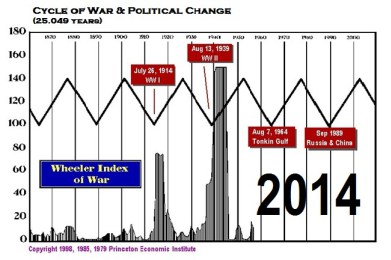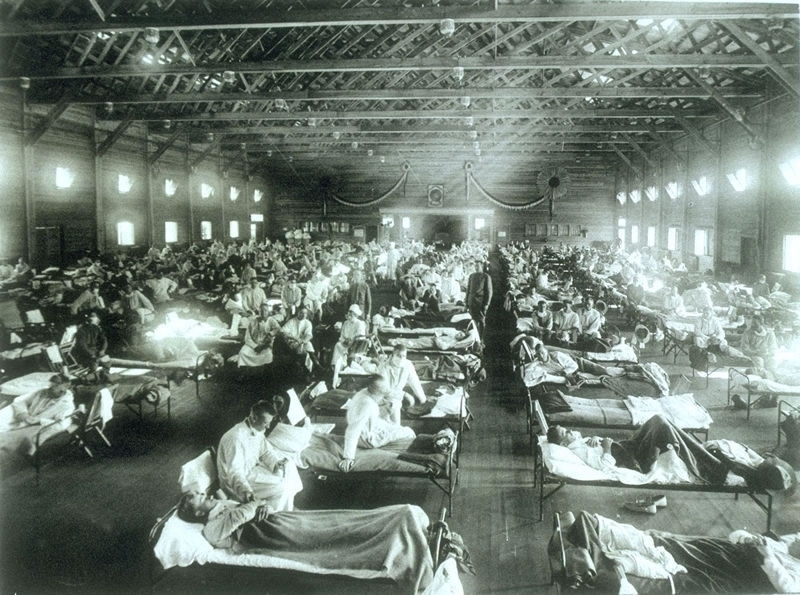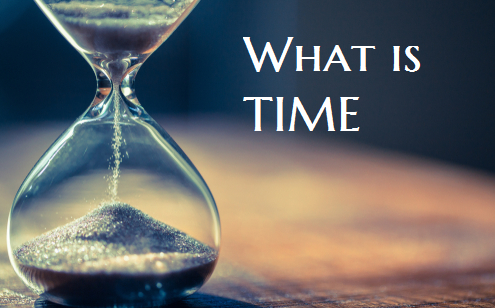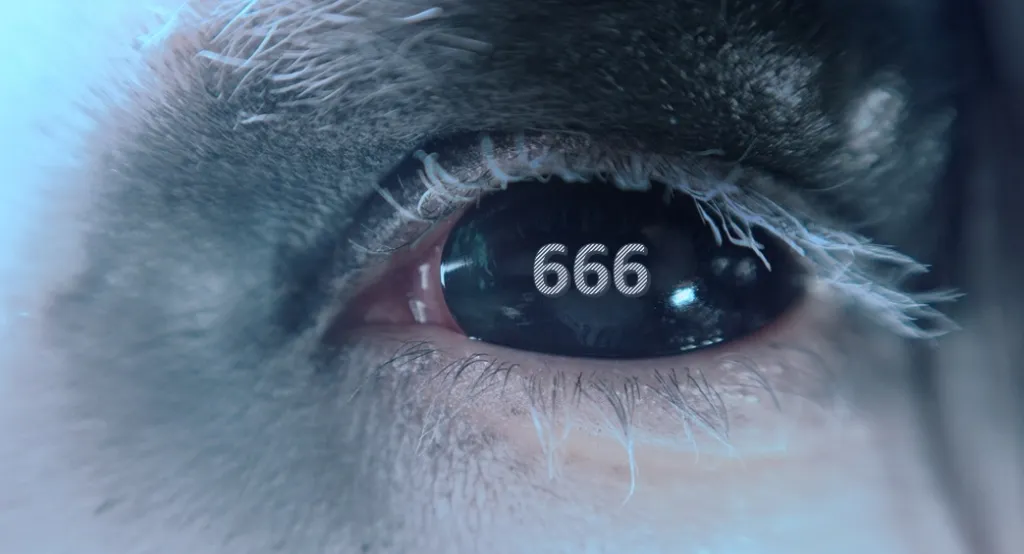Historically, crops fail during periods when the weather turns sharply colder. Rising food shortages coincide with rising aggression. This seems to be a link back into ancient times. The way the climate is now turning colder is in direct harmony with the war cycle. Switzerland began recording temperatures in 1864, which provide a good European database. World War I was a profound turning point for it actually brought together war, climate, and disease.
In 1916, the climate turned down dramatically when it rained extensively during the summer, snowed in June, and this trend persisted into the following year. In fact, March and April 1917 were the coldest months since 1764, based upon the Swiss data. By no means was this climate change confined to Europe. North America also witnessed crop failures that helped prices rise in addition to the war factor. It was also colder in Argentina where crops failed due to a severe drought. So in the northern hemisphere there was cold and excessive rain, and in the southern hemisphere, there were droughts and the lack of rain.
Such climate changes have been noted throughout history. The “Little Ice Age” during 1550-1850 was at the bottom on the sun energy output on its 300-year cycle, which bottomed during the mid-1700s. Then in 1816, there was also a massive drop in temperature that created a large-scale famine in Europe as a result of the Indonesian volcano eruption at Tambora, which became known as the year without a summer. This single event altered the global climate for the next two years. The sharp climate drop in 1916 was not created by a volcanic eruption, but like markets, this was a reactionary correction that created a spike low in climate.
The 1916 spike low in climate coincided with war and made this a devastating war aside from the poison gas. This was then joined by the terrible influenza or flu pandemic of 1918 to 1919, which was the deadliest in modern history that infected an estimated 500 million people worldwide or about one-third of the entire planet’s population. It killed an estimated 20 to 50 million victims.
This pandemic began in the spring of 1917 and some sources point to troops in France as being the center of the pandemic. A significant precursor virus, harbored in birds, mutated to pigs that were kept near the front. Others place it with troops in Austria. Nevertheless, the influenza ran from mid-1917, became noticeable by January 1918, and continued into December 1920. The unusually deadly influenza pandemic shortened the overall life expectancy by 12 years. This influenza killed the strong rather than the weak since it thrived on the overreaction of the body’s immune system. The strong immune reactions of young adults fed the virus, whereas the weaker immune systems of children and middle-aged adults resulted in fewer deaths, which was very unusual.
The governments, as always, lied to the people and prevented the press from reporting on the disease. This may have contributed to the massive death toll. The governments of Germany, Britain, France, and the United States all censored and minimized early reports of illness, thereby increasing mortality. Only Spain did not do this so people assumed this was the Spanish Flu. The king of Spain, Alfonso XIII, was gravely ill but survived.
We are heading into a major change from the peak in the energy output of the sun into the next mini-Ice Age. Combined with our war cycle, this means we will see food prices rise and crops fail. We will also see the cycle on disease rise and the abuse of antibiotics may start to come back to haunt us over the next 12 years.











